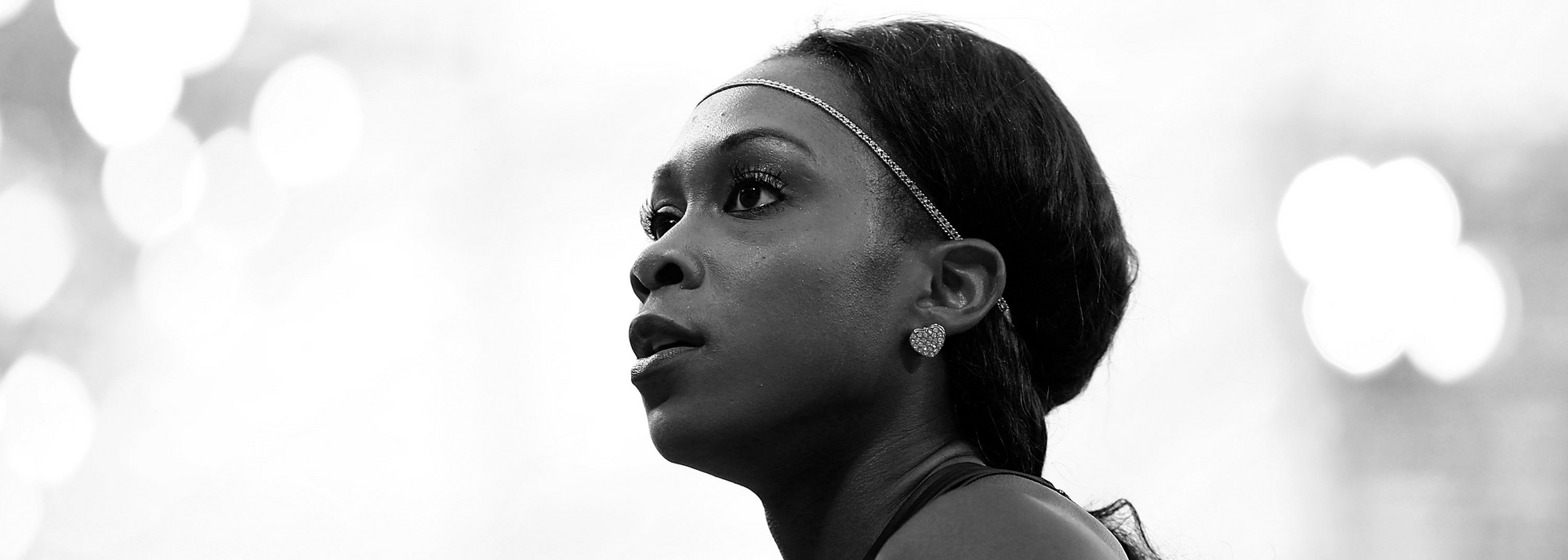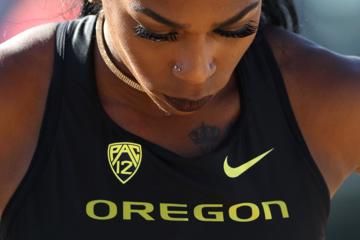Cindy Ofili competes at the 2016 London Diamond League (© Getty Images)
by Cindy Ofili
Going into the race, there was a voice in my head: Cindy, don’t do it.
The week before, I had run at a street meet in Manchester where I felt a twinge in my Achilles tendon, one I thought I could run through.
I couldn’t.
That year, 2017, I had already missed six weeks' training with a hamstring injury and, with the world championships on British soil later that summer, I felt in a race against time to get there as a medal contender.
I was behind, I needed races and I didn’t care that I was feeling pain – I was going to run. It was early June, the adidas Boost Boston Games, and my career – and life – was about to be turned upside down.
The first half of the race was fine. Then at the fifth hurdle I felt a pop in my right Achilles. Other people said they heard the noise, too, but at the time I felt nothing – adrenaline took over.
I tried to keep running, but my foot was wobbling, like it was no longer connected to my leg, which in a way it wasn't. At the time it didn’t feel as bad as it was, but that night the pain became severe.
Two days later my doctor delivered grim news. “Yeah,” he said. “You need surgery.”
I had ruptured my Achilles tendon.
What the doctor said next, though, was what brought me to tears: “With this injury, a lot of people don’t get back to where they used to be, so be aware of that.”
I had surgery two weeks later in North Carolina, beginning a 12-month recovery process that came close to breaking me, but which, with the benefit of hindsight, has actually made me what I am today – a stronger person.
For the first few weeks I couldn’t walk, so had to get around on one of those scooters that you kneel on. It was miserable. Trying to get in the car was hell, so I just wouldn’t leave my house because I was so annoyed. You know what? I’m just going to lay in bed today.
Two weeks later I was able to use crutches, and a few weeks after that I was in a protective boot for a month. Finally, after two months, I was able to walk again.
I did physical therapy every day, toe curls, all these little exercises that would teach my foot how to walk again. Physically I was in a bad place, but mentally it was even harder. When I couldn’t walk, that was all I wanted to do. I would bargain: I don’t even want to run, just let me walk. It was miserable.
It was five months before I could jog again, and that day at the end of 2017, even though I was limping, I was so grateful.
When you’re injured, it’s easy to sink into a certain mindset: woe is me – why did this happen? But I learned that you can’t let yourself ever get that low, because the lows do get low in track.
I was devastated, unable to understand what was going on in my life, and after a while I had to get off social media because I was reminded so often of not being able to compete.
Instead I took time to myself to reflect. I prayed more, focused on other interests and learned more about myself. It was a really self-identifying process, making me realise that I am more than just my sporting career. It was nice to realise even though you’re hurt, I could still be Cindy – I don’t have to be this track athlete that people see me as.
The internet, by its nature, is full of success stories that convince you everyone is thriving, but people often don’t share this part of it – the hard times.
I decided to make a YouTube channel for that reason, speaking to young athletes going through injury to inspire them. I also read a lot more, about so many things I wasn’t aware of, and spent a lot of time listening to podcasts, developing friendships – things I couldn’t do when I was travelling, training, racing all the time.
In that sense, the injury really helped me. If we can’t run we sometimes feel we can’t do anything but there are so many things we can do to help others. You need to understand your worth and know that the results don’t define you.
When you’re younger, it’s hard to look at it like that and it helps having people in your life to show you. When you’re grounded, it’s so much easier to deal with setbacks, and hopefully I can show others that an injury won't set you back forever, even if it sometimes feels like it will.
In 2018 I got back racing but my times, naturally, were far from what I was used to.
In 2015 I ran 12.60, in 2016 I ran 12.60, but last year the fastest I could do was 13.26. Somebody might look at those races and think, oh, you ran so slow, but not me. Sure, I was running times I ran in early college, but to me they were victories.
An injury like that can really mess with your confidence, but I had to get over the hump of thinking I’m going to hurt myself again. Once you’ve had a traumatic injury, your mind is trying to make you think every little pain is bad.
There were many times I felt my mindset was not okay, and seeking the help of a sports psychologist has helped a lot in that sense. Hurdling well is about confidence – since the injury I’m lacking it and it’ll take some time to get back to that place.
Now I can't wait to get my season rolling. I'm still well off my best, but what matters right now is that I’m healthy and there are no restrictions in my Achilles, so I’m planning to use indoors as a stepping stone.
And 18 months out from the Tokyo Olympics, I’m allowing myself to think of them again.
Looking back, Rio was bittersweet – I expected to make the final and leave it all on the track and I did that, but at the same time I wanted that medal. I missed it by 0.02, finishing fourth, and it’s hard when you get that close. But moving on to 2020, hopefully I can go there for a medal. It might take some time but I know I can do it.
From now on, though, I'll always run with a different outlook.
There are some days where I think I don’t want to train, but when they hit I just remind myself: Cindy, you prayed to be able to train. That makes it much easier, to always look forward to the process.
It sounds so basic, but to be able to jog and hurdle over things is such fun – something I’ll never take for granted.
For other athletes who are struggling, my best advice is to have patience. You have to understand that in time, you’re going to be okay, so take your time with the recovery process.
What helped me? I found there’s something powerful in writing things down, telling myself all the things that motivate me. I have a vision board in my bedroom and have written on it where I want to be and how I’ll get there – seeing that constantly keeps my mind on the right track.
Sure, you’ll have times when it’s hard, especially mentally, but keep the long term goal in mind and stay motivated by doing things that are beneficial, not just for you as an athlete but for you as a person.
I’m still a long way from where I want to be, and I know it'll take some time. But I’m getting there.








